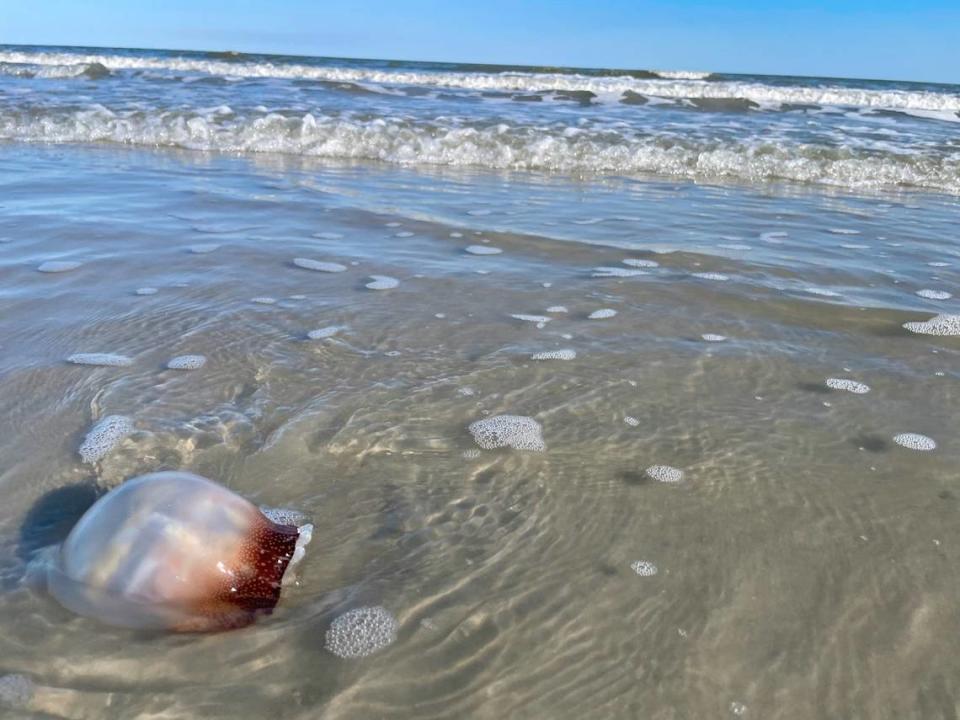SC beaches earn ‘C’ grade in new environmental report. Here’s why
South Carolina is widely known for its pristine beaches and historical significance. Families flock to the Palmetto State every year for family vacations and memory making.
However, a new report says these beaches might not be as immaculate as many have thought to believe.
South Carolina earned a ‘C’ grade in the 2022 “State of the Beach” report from the Surfrider Foundation, a non-profit environmental organization. The report is meant to describe how each state is maintaining its coastlines and give a letter grade based on its success or lack thereof.
South Carolina is doing “a ‘decent job’ of coastal management and continues to implement strong policies mitigating beach nourishment and restricting coastal armoring,” according to the report.
“Despite having good policies in place to manage sand and erosion, the state needs to limit all new development in flood zones and advance sea level rise planning work,” the report continued.
The ‘C’ grade was given to the state of South Carolina for its “mediocre policies.”
This grade was given from an accumulation of categories including: sediment management, coastal armoring, development and sea level rise.

State sediment management labeled “ok.”
Despite the state’s “ok” analysis, the report stated that “the state does an effective job of analyzing physical and ecological implications of beach nourishment, including protecting critical turtle habitat, spawning seasons and migratory movements of important marine species.”
Coastal armoring labeled as “ok.”
The report details that South Carolina has included living shorelines in its coastal management strategies for 20 years. It also has solid policies on restricting armoring.
As for the state’s living shorelines, the South Carolina Department of Health and Environmental Control has issued new regulations. These define and set performance standards for living shorelines to help support their effective implementation, the report states.
South Carolina scores poorly in the development category
The reason being that “unfortunately, the rebuilding of structures located seaward of setback lines that are destroyed due to natural hazards is allowed. The state recognizes the coastal dunes as important buffers for development; however, the state would benefit from codified policies to ensure the protection of these buffers,” as described by the report.
Aside from the”bad” report label, the state does have good setback standards. These standards are 40 times the average annual erosion rate and are no less than 20 feet from the top of the main sand dune at ocean coastlines, the report notes.
In addition, setback lines are revisited every seven to 10 years.
Sea level rise category “ok.”
Although the state has worked to improve sea level rise planning within the past few years and the ‘Climate Change Impacts to Natural Resources in South Carolina’ does hold “good adaptation methods,” the state has a sea level rise vulnerability assessment that is “fairly broad,” states the report.
“None of these adaptation recommendations have been implemented or codified. In addition, minimal community awareness or educational resources about climate change and sea level rise are provided on state websites,” the report continued.
Report recommendations for South Carolina
• Prohibit the rebuilding of coastal structures seaward of the setback line that were destroyed due to natural hazards.
• Remove coastal armoring exceptions currently in place.
• Develop and implement an adaptation plan using outlined policies and management recommendations in the Adapting to Shoreline Change report.
• Establish stronger restrictions on developments in coastal hazard areas and locations seaward of the baseline.
• Conduct a thorough sea level rise vulnerability assessment.
• Require that repairs of coastal structures from storms are restricted, retreated or built to higher standards.
• Develop state websites with educational resources and guidelines for coastal communities to prepare for climate change and sea level rise.
• Remove exemptions for golf courses to build in coastal hazard areas.
• Ensure that management agencies have jurisdiction to adequately enforce regulations.

